A Plan is applied to a set of works and their products with the intention of working out the financial implications of choosing to publish them, so they allow the input of products’ sales forecasts across multiple channels in different currencies, products’ production costs, and works’ editorial costs to be accounted for, and for a financial report to be generated to show the expected margin contribution.
One of the aims of the feature was to use existing data structures in the system as much as possible, so a work or product that is developed for use in a plan is exactly the same sort of work or product that Consonance users will already be used to:
- Appropriate roles,
Planner
,Plan sales estimater
etc can be used on the works. - To-dos can be added to manage the plan development process.
- Project statuses such as
Planning in progress
,Planned, pending decision
etc can be assigned.
If the plan is approved and publishing is to go ahead, then those works and products are in the system ready for further development.
1) Setting up works and channels. Plans can be for one or more works, and you can opt-out products. Here I’ve made it so that AJ (Audio) products are not part of the plan.
Plans can also be for one or more sales channels. Here I’ve only selected Home trade; I’ve left export, direct etc off the plan.
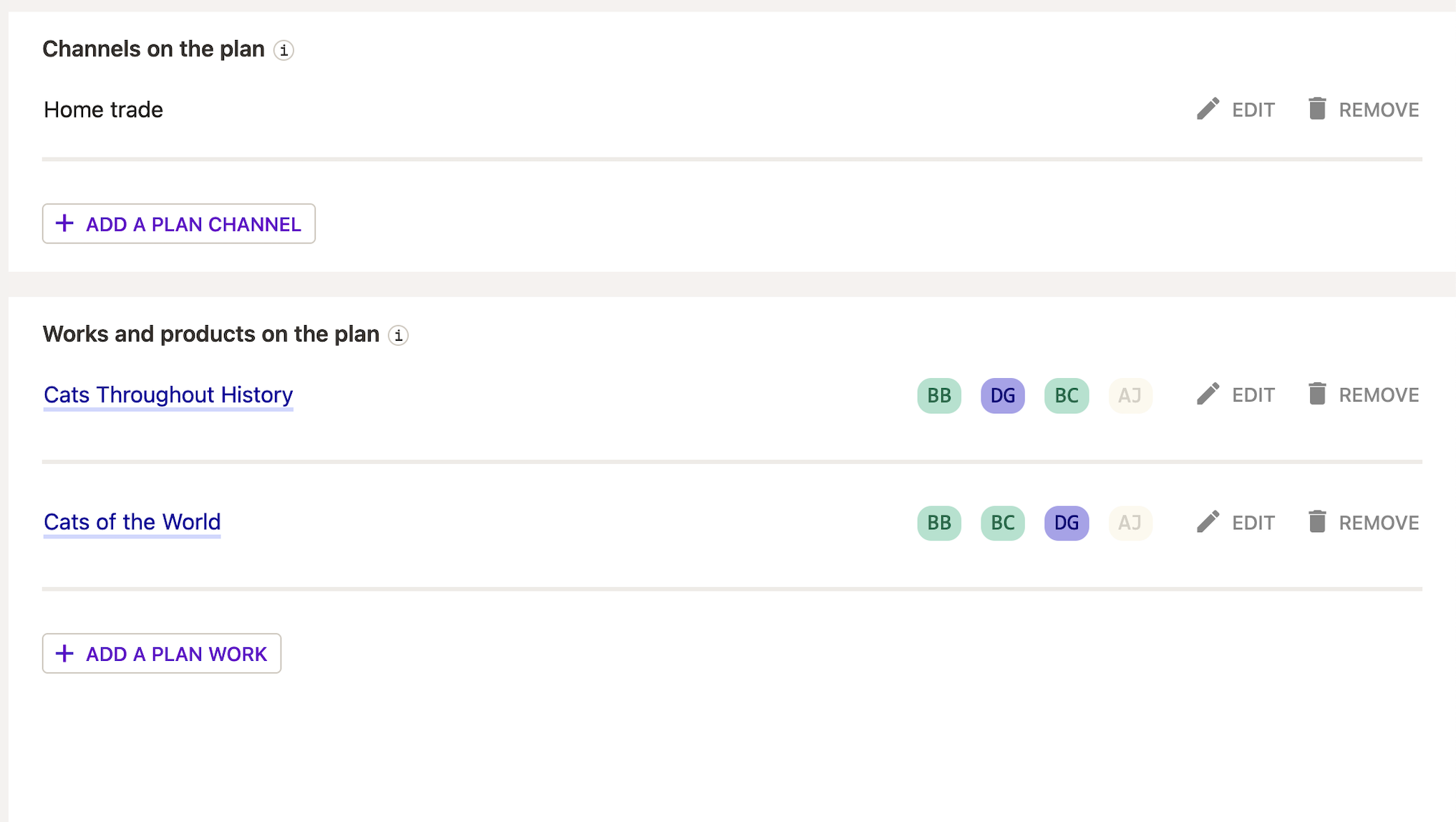
2) Sales forecasts. Now I’m on the sales forecasts page of the plan. I’ve added in some basic data – the list price and the quantity by product.

When I click to edit, I can add in a lot more info. Most of it can be set as the channel’s default, though.
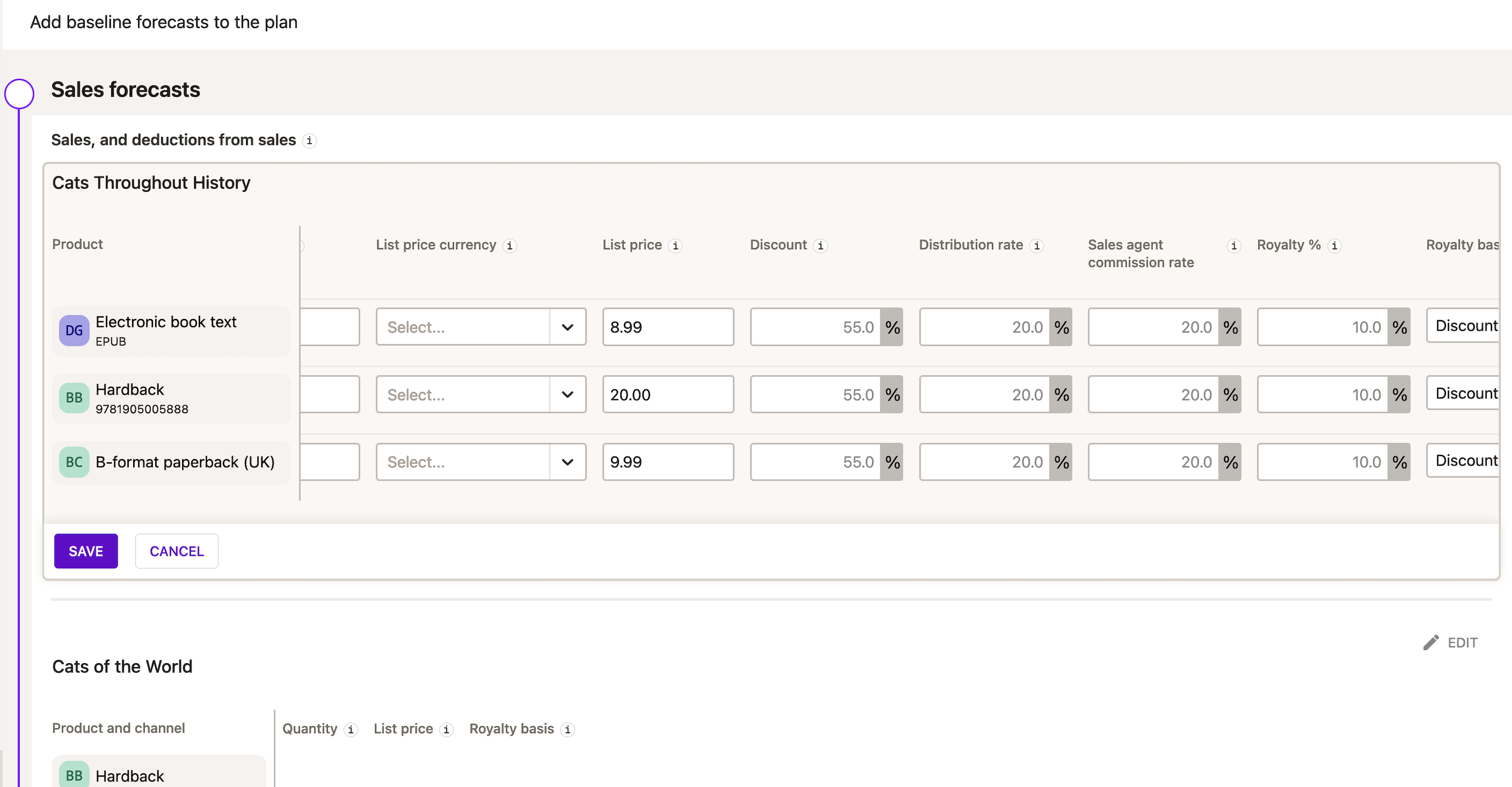
3) Cost forecasts. I’ve got costs at work level, here and also at product level. Things like origination get paid once per work, whereas print costs are at product level. Those cost names are anything you like – raise a ticket to get them set up to match how you normally account for costs.
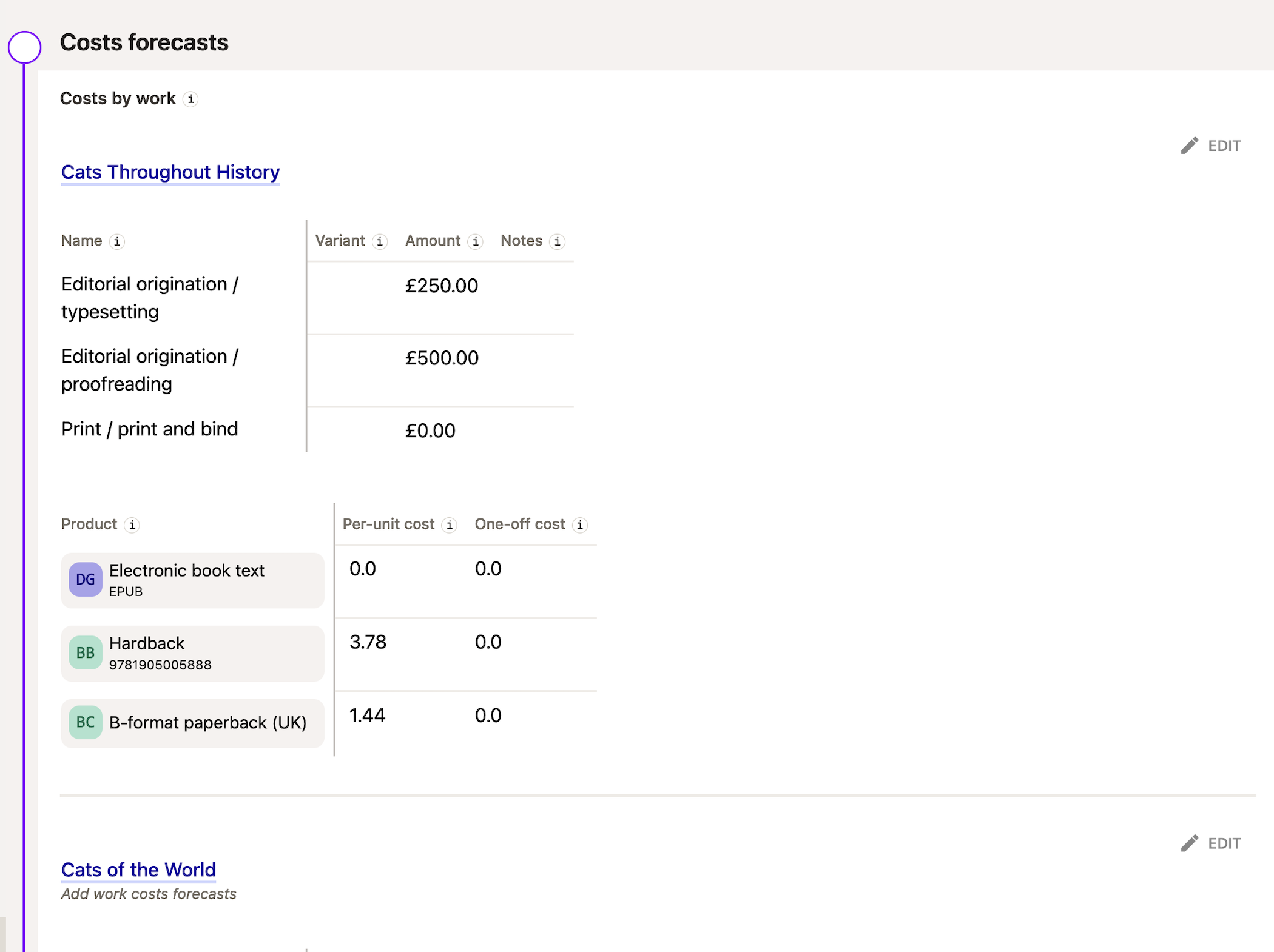
4) Report. Here’s the summary report:
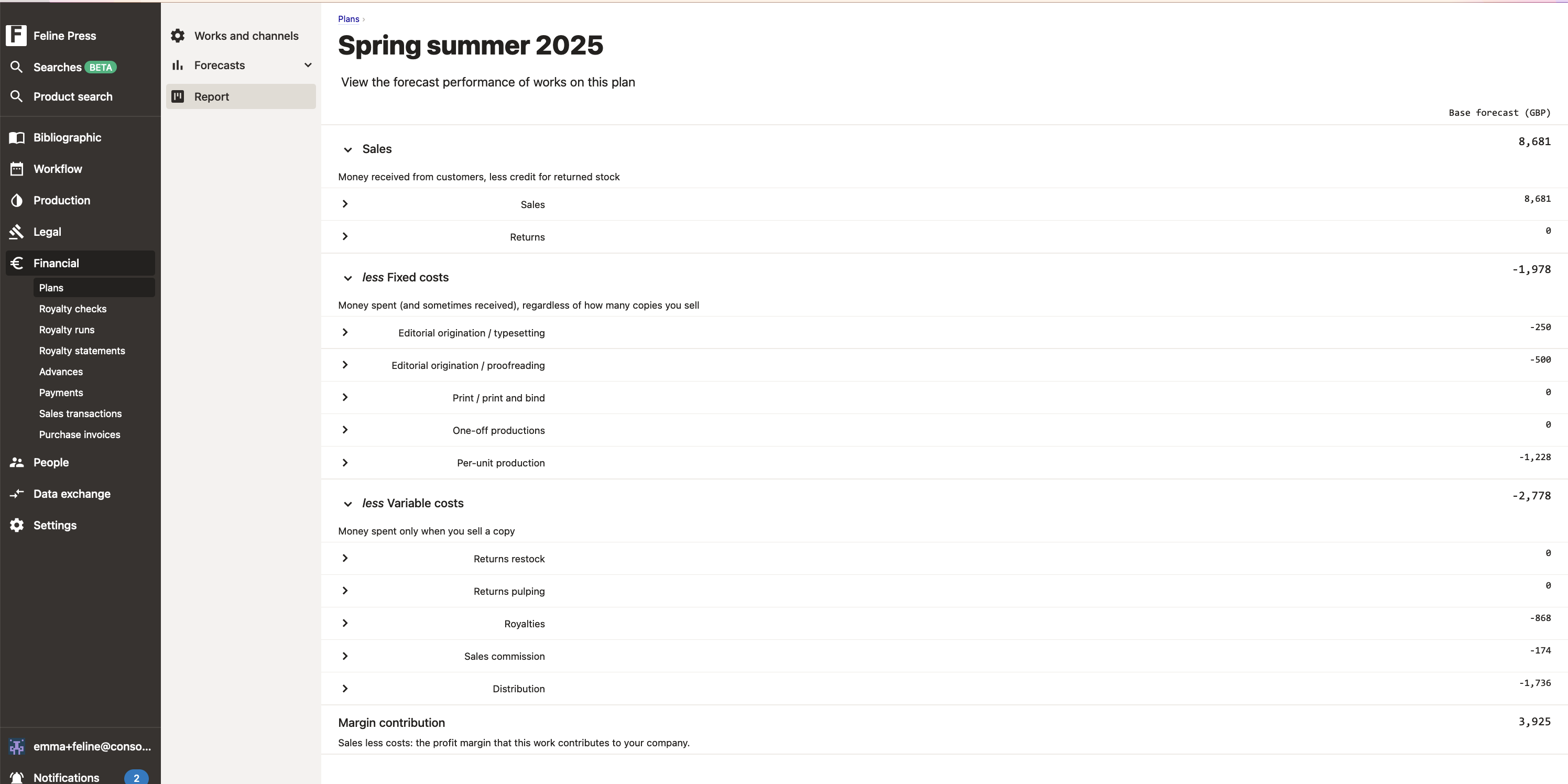
Any of the rows can be expanded:
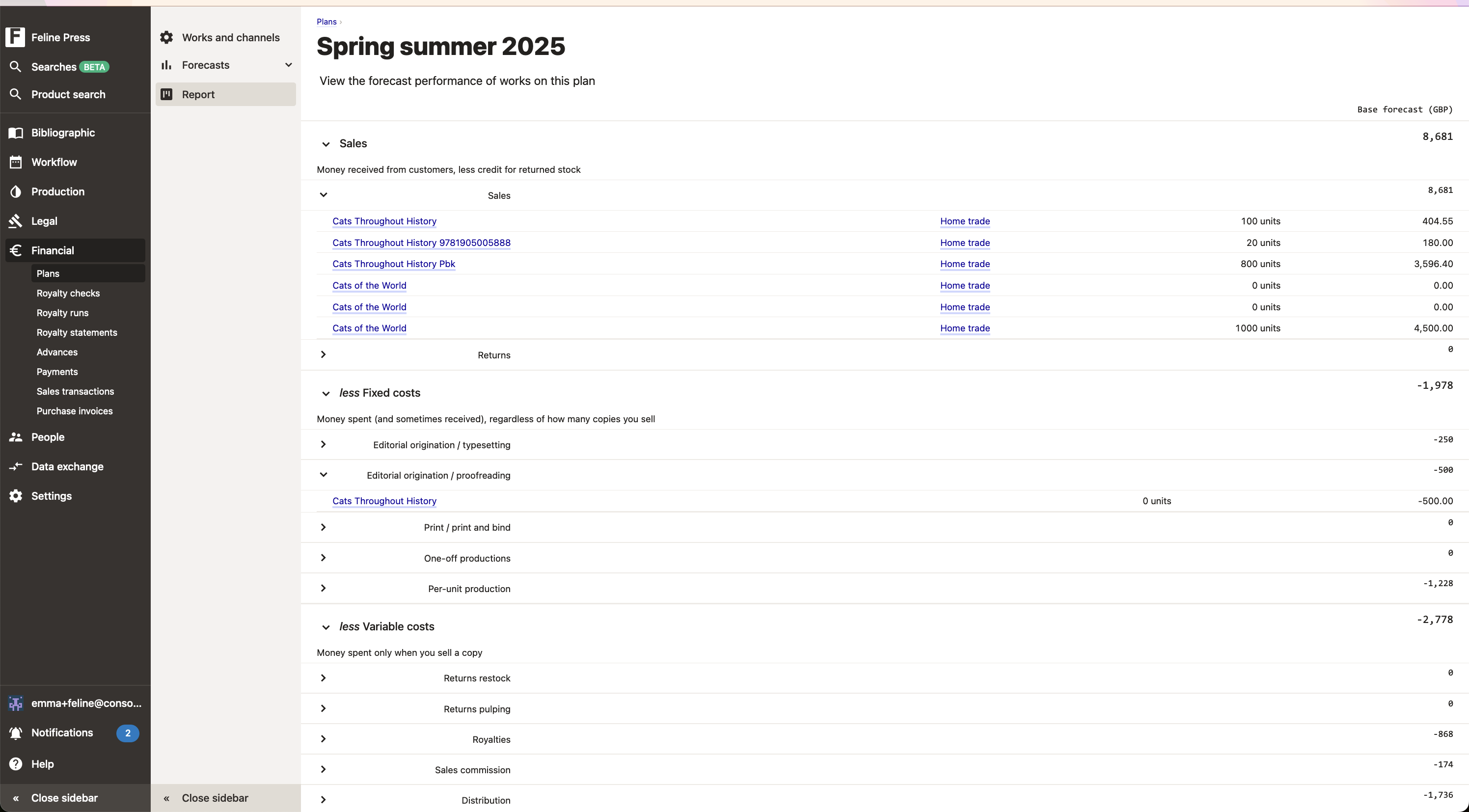
A lot of those numbers are calculated based on channel defaults and their overrides at sales forecast level – such as returns, and everything in the variable costs section.
Defaults
Our default set of cost groups is:
- Editorial origination
- Advances
- Indexing
- Copyediting
- Proofreading
- Cover design
- Typesetting
- Warehousing and fulfilment
- Marketing
- Overhead
- Publishing fees
- Indexing
- Sponsorship
- Grants
- Rights
- Co-edition
- Extract
- Film
- First serial
- Second serial
- Translation
- TV
These are amended on request.